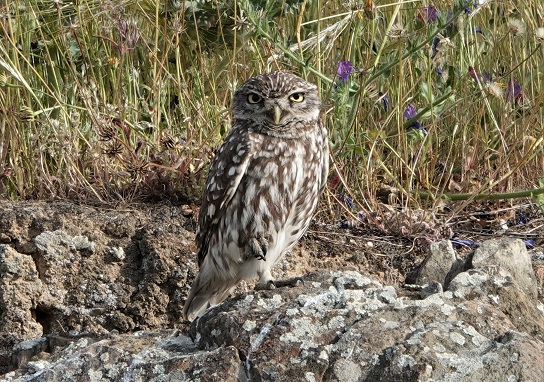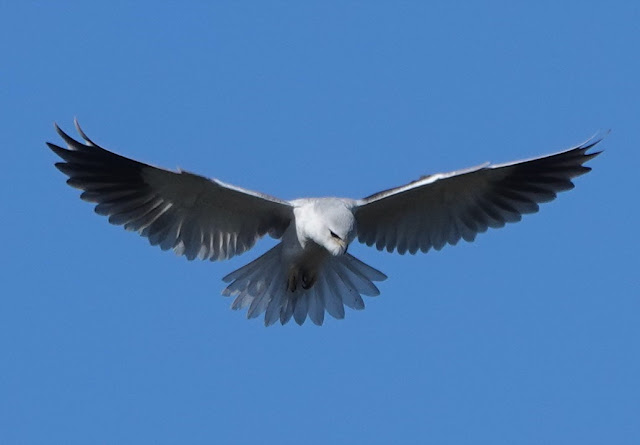A final fling
 |
| Displaying Great Bustard (John Hawkins) |
There was a communion. We watched the Great Bustard in full display and the fresh westerly breeze trembled his splay of white feathers. Touched by the wind, the tall flowering grasses of early May swirled. The same wind caressed our faces. Elements shared, and I felt strangely connected to this rather preposterously strutting bird. The lone male Great Bustard was thigh-deep in rocket, bugloss and galactities thistles: yellow, purple and pink. His neck was swelling in testosterone driven frenzy, tumescent and almost reaching the ground. It was medicine-ball in both shape and colour: a rich russet with a creamy buff V creating a divide in the centre. Narrower black strips appeared at the side, where the feathers had parted. Nuptial whiskers were standing erect, looking like ear tufts. With his tail pushed flat across his back and his wings seemingly twisted as if double-jointed, he had become from the rear a pyramidal white fluster. His display was punctuated by stochastic jerking movements as he gradually rotated. Thus his extraordinary absurdity could be viewed from all angles.
He seemed alone. At one moment a male Little Bustard appeared in the same field of view, just a few feet away from his monstrous cousin. He puffed up his chest and gave his head a little jerk, emitting his raspberry-blowing note. Such was his display, touchingly modest in comparison.
Then we noticed a female Great Bustard, quietly roaming in the vicinity. She was making cursory pecks at the spring flowers and was at best nonchalant in regard to the puffed-up male. He seemed to sense this and his wings closed like book covers, and he resumed his normal shape. He made a few long strides away, as if to retain some modium of dignity.
But something had triggered the female and she started to approach the male, who stopped his strop and again his neck swelled and whiskers rose. His wings unfurled like a white fan. He became, indeed, like a lotus flower, feathers turning into petals, opening in an offering. His crescendo of movements started again, a slow, jerking circle, his rueda display "the wheel". The female was no longer pecking at plants distractedly. Instead she seemed to be sprucing herself up, making little preening movments to her breast. We continued watching and I was convinced that they were about to mate, but something changed her mind and off she went in one direction, whilst the male, reading her to perfection, strode off in the opposite one.
 |
| Singing Calandra Lark (John Hawkins) |
We had watched this episode unfolding for over an hour and throughout the whole time, a Calandra Lark had been singing almost non-stop. It too was a dedicated effort to anounce presence, but unlike the unique efforts of the Great Bustard, the Calandra drew on the sounds of a repertoires of imitations of other species in order to impress. We heard a medley of Linnets, Swallows and Goldfinch, Meadow Pipits and White Wagtails, Green Sandpipers and even a Gull-billed Tern. It had drawn on its remarkable soundscape, from across the four seasons: all wrapped into a continuous rhapsody..



Comments